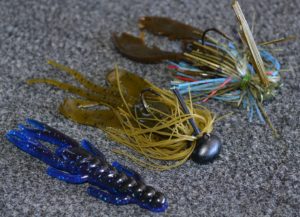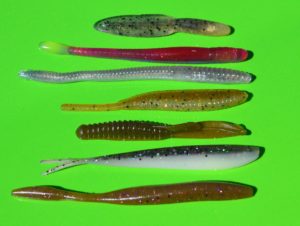Ron's Catch - Winter Fishing

When winter arrives, and the days get colder, many will pull their boats out of the water and put the fishing equipment away. However, if you’re not afraid to venture out, layer up on the clothing and put in a little work, this can be one of the best times to get out and go fishing! When you are the only boat on the water, like I have been many times, this leaves very little pressure on the fish.
As water temperatures continue to fall and we move into the winter months, fish activity will slow down as well. Fish are cold-blooded, so their body temperature will be the same as the water. The water temperature will also dictate how much, and how often, fish need to feed. Once the water temperature drops below 60 degrees, for example, the digestive process and activity level really slows down. A bass will still need to feed, but in cooler water, they become more lethargic and less active. This is very important to remember if you’re looking to cash in and make the best of your fishing days in the winter months.
Plants and aquatic vegetation usually die off in late fall/early winter, and bass will usually retreat out of the shallows to deeper water where the baitfish or food source is more plentiful, and water temps remain more stable. To find these fish, I use my electronic fish finder, which helps me quickly locate bass and the baitfish much quicker. If you don’t have fish finders, then it is helpful to find a good map and focus on deeper water, channel swings, or steeper bluff walls. Once you find where the fish are located, you will notice they are usually in a school.
At this point, I like to use a variety of finesse techniques to figure out what is working best. Downsizing is usually the key to getting more strikes in the winter months. One of my preferred methods would be the drop shot technique. This allows for a casting or vertical presentation that is hard to beat any time of the year. I prefer to rig the drop shot with a size 1 Trokar TK150 Drop Shot Hook and a ¼ ounce Drop Shot Weight. You can experiment with the weight depending on the depth and structure you are fishing. When it comes to the lure, I use a variety of soft plastics but stick with the 3” and 4” sizes. You may want to start off with a straight tail finesse worm, or a Shad Style bait like the Yamamoto Shad Worm.
When you get a bite or find fish on your fish locator, try to experiment with color and different profiles before changing location. Don’t forget to mix it up and throw a jig as well. Jigs come in many varieties and sizes and can be deadly in the winter because you can cover a lot of water with a jig presentation. A jig works well because it mimics a crawfish moving slowly across the bottom. It is also a great lure to locate structure and can draw big bites.
Remember, it is best to be patient and move your presentation slowly. The distance separating casts should be closer and more methodical when fishing an area. There are many times when it may require several repeated casts to the same target in order to trigger a strike.
When it comes to my fishing line, I like to downsize to the lightest line I can get away with for my fishing situation. Fish can be very finicky in cold water and it’s critical that your presentation looks as natural as possible. If you’re fishing clear water, I recommend a fluorocarbon line such as Seaguar InvizX. The line is invisible to the fish, but remains supple in cold water, making it much easier to cast. In addition, there is no stretch in the line, so it can help you detect even the slightest of bites.
Using these few tips, you can hit the jackpot on your next fishing trip and might even end up being the only one on the water.